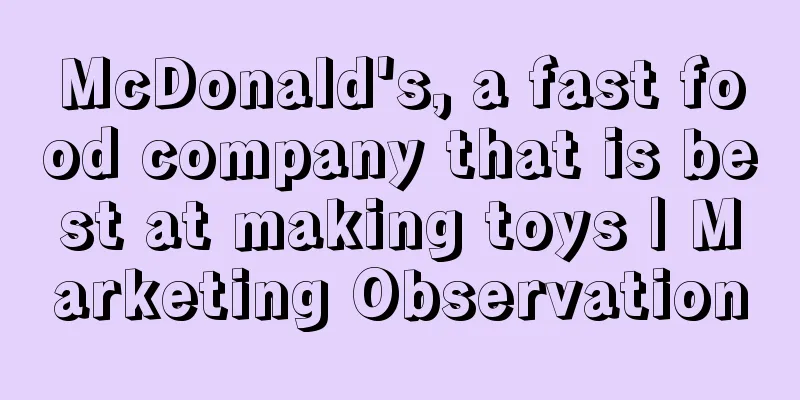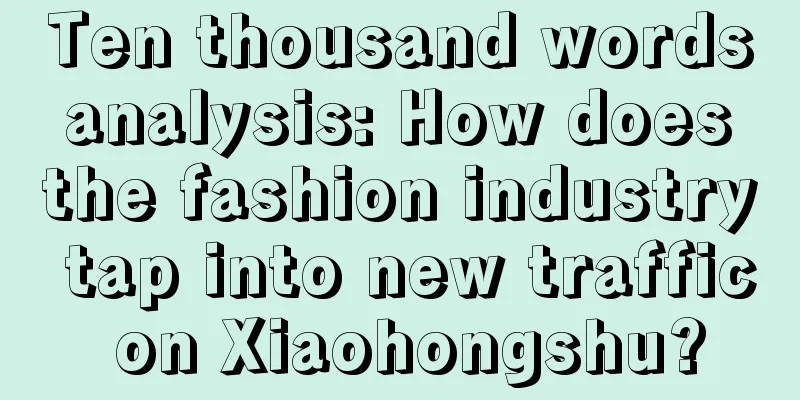Stop copying books, this is how to do user life cycle analysis

When doing data analysis, user life cycle analysis is a typical " theory is easy to understand, but useless once the data is processed ". Many students are confused: "How should the life cycle be calculated? Why does my calculation not work when applied to the business?" Today we will systematically answer this question. 1. Life cycle in booksEveryone has seen this picture in various books and articles. It should be noted that this diagram talks about the theoretical user life cycle. It assumes an inverted U -shaped relationship between user retention and user value. Therefore, the following theoretical results are derived:
However, this assumption may not hold true in specific business scenarios, especially since the data will not show a perfect curve. Therefore, it will make many students who do specific business analysis very depressed. 2. Difference 1: Separation of activity and paymentFor offline stores, users pay when they arrive at the store, and consume first and then experience the service. However, in Internet products, it is common to see a disconnect between payment and activity. Or some products simply allow users to be active without paying, and charge for additional rights and props. This is the case for games, online music, videos, communities, etc. In short, when user activity is disconnected from payment, the user life cycle curve will change: user value no longer changes with retention time, but independently, presenting a style similar to a matrix model (as shown below) At this time, we should pay special attention to the proportion of various types of users, especially the proportion of free users . In various types of Internet products, there is a considerable proportion of free users. If we do not distinguish and generalize, it will create a false illusion of prosperity. The final result will be that the product will be well-received but not popular, and the commercialization process will be extremely difficult. 3. Difference 2: Scenario-based ConsumptionEven when consumption is closely tied to active behavior, problems can arise. The most common is scenario-based consumption, such as: Travel:
This is a typical external driver. E-commerce:
This is a typical internal driver. Note that both internal and external factors are normal and reasonable scenarios in real life. However, these scenarios will lead to one result: user retention time and user value are not inverted U- shaped, but random and even difficult to predict (as shown in the figure below). This makes it difficult to draw a user life cycle curve. Long user retention does not mean that the user is valuable, and the user life cycle value is also difficult to estimate. This is especially true in scenarios such as big promotions and hot-selling products. In the end, users will buy from whichever one is cheaper, regardless of the previous retention time. At this time, we forcefully plot the user life cycle and use the average value to replace the real situation of each user. The result is that the role of operations, marketing, and products is blurred, which will create an illusion of false prosperity. Let everyone think: as long as the user stays for a long time, he will pay sooner or later. As a result, it is found that the average value of the user life cycle value is getting lower and lower. Difference 3: Newcomers who only try a littleAttracting new customers is the core of all Internet businesses, but it is also where things often go wrong. It is common for new customers to not make any purchases, or to make a purchase after a long time. Once the proportion of these new customers who try out new products is high, it will lead to inaccurate evaluation of new customer acquisition activities . If we use the average value, we will average out those people who actually have zero consumption, which will create a false prosperity. If we exclude them and only count those who have consumption, the channel value will obviously be overestimated. In addition, due to the existence of fake users, it is difficult to calculate the cycle length (as shown in the figure below). This kind of statistics is difficult, and is often used by business departments as an excuse to pass the buck. Especially when new users and scenario-based consumption appear at the same time, the marketing department, growth team, and sales department responsible for attracting new users like to say: "We have to evaluate the user life cycle value, not just the present" and "Although the user is not spending now, he may spend a lot in 300 years, so you can't say that I did a bad job, it's your statistics that are inaccurate." The solution to this problem is simple: only long-term transactions are counted in the life cycle value. For example, B2B follow-up, large-value B2C transactions such as houses and cars, otherwise the life cycle value is not counted. For high-frequency transactions such as taxis, daily necessities, and fresh food, if the users you attract do not consume for a month, it is a failure to attract new users. What's the life cycle? Are all the users you attract fasting to achieve immortality? ! Not eating a meal for a month? ! Really. 5. Deeper issues behind the dataBehind these data issues, there is a deeper question: Who are the users’ demands for a product throughout its life cycle? Nowadays, no matter where you go to buy something, you can follow a bunch of public accounts and mini programs by scanning the code. We are called "Dear Members" by various merchants, but looking back, do you really think you belong to a certain merchant? You know that other merchants have discounts, so why would you buy here? ? ? ? It is possible that the user life cycle still exists, but unless it is a super app like WeChat, it is impossible to grasp it. User behavior will be scattered in various scenarios and applications. In this case, is it still necessary to pursue the full life cycle value as in the previous era? It is very likely that the user relationship in this era is scenario-based and event-based. It is based on this idea that the concept of CDP was born, replacing the user levels, user groups, user value curves, and user growth paths in traditional CRM theory with scenario-based event marketing (passive) and push marketing (active). In short, I don’t expect users to belong to me. I just grab them when they want to pay. Of course, the biggest challenge brought by this concept transformation is the uncertainty of marketing costs. The previous practice of calculating the lifetime value of a user and then allocating costs in proportion is obviously not suitable for each scenario. If the scenario and needs are not fully understood, it is likely to result in duplicate resource investment. Author: Down-to-earth Teacher Chen WeChat public account: Down-to-earth Teacher Chen (ID: gh_abf29df6ada8) |
<<: New consumption in 2023, lively and lonely
>>: 2023, the consumer world looks for its own reasons
Recommend
Xiaohongshu’s latest hidden function starts stealing WeChat traffic!
Xiaohongshu recently launched a new feature that a...
One live broadcast sold over one million items. Is the secretive and highly profitable matrix model back?
Live streaming slicing is a new model that uploads...
Abandoning Arc'teryx, cycling clothing becomes the new favorite of the middle class?
The cycling pandemic in 2024 has led to the explos...
Let’s make it clear once and for all: What exactly is a brand?
Brands are always on the lips of merchants, but wh...
If you understand Hello Kitty, you will also understand Pop Mart
In recent years, Pop Mart, which focuses on IP cul...
What is the data analysis MVP method? How to use it?
If you want to achieve success in your work, maste...
Does Shopee in Thailand need to pay VAT? What are the requirements for joining Shopee?
In our country, whether you open a store on an e-c...
Practical application of the crowd reverse funnel model
In the wave of digital marketing, Xiaohongshu has ...
How to refund the deposit when Lazada closes a store? How to apply?
Lazada is one of the most promising cross-border p...
The Certainty and Imagination of Brand Variety Show Marketing in 2024
In the past two years, as variety shows have lost ...
The foundation of corporate strategy: how to build a brand
This article discusses how to focus on brand compe...
Does Amazon in Europe have VAT? In what cases do I need to register for VAT?
After opening a store on the Amazon platform, merc...
Why is coffee getting weirder? Octopus coffee, chili coffee, temple coffee...
Introduction: The fast-moving coffee market has be...
Problems with new consumer brands
In the ever-changing consumer goods market, more a...
DingTalk personal version is fully launched, and AI photo templates are launched in collaboration with "The Legend of Zhen Huan"
On January 4, 2024, the personal version of DingTa...









